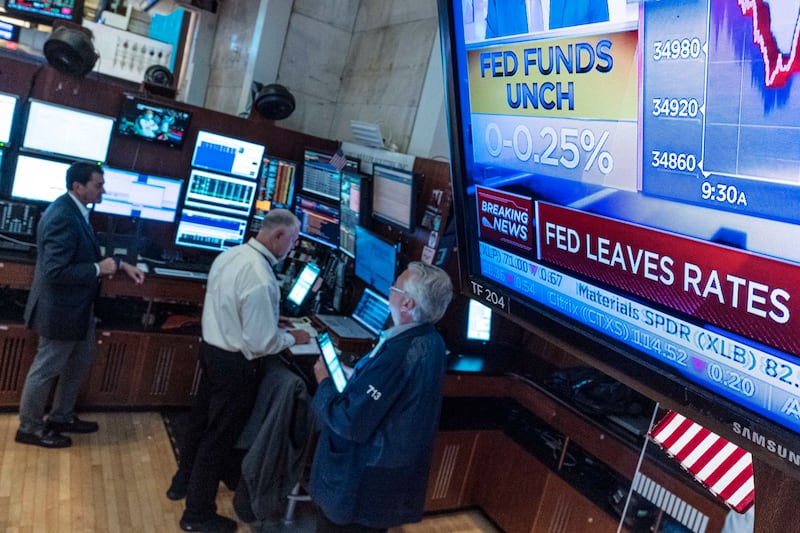In recent weeks, members of the US Federal Reserve’s rate setting committee and regional presidents of the central bank have used interviews and speaking events to signal to the market that monetary stimulus may start to be withdrawn sooner rather than later.
Since June last year, the Fed has been buying at least $80 billion of Treasuries and $40bn of mortgage-backed securities every month and pledged to do so until “substantial further progress” had been made towards achieving the twin goals of low unemployment and average inflation at 2 per cent.
As Covid-19 vaccines were distributed and movement restrictions were eased, the US economy grew 6.5 per cent in the second quarter of this year and inflation surged to its highest level in more than a decade. That raised questions about whether the Fed was behind the curve in continuing to pump significant liquidity into the financial system.
However, job growth was weaker than expected in April and May and policymakers were confident that the surge in inflation was due to reopening friction and supply chain disruptions that would prove transitory.
Nevertheless, most Federal Open Market Committee, or FOMC, members agreed in July that “substantial further progress” had been achieved in meeting the Fed’s inflation goal, but not on the employment front.
However, better-than-expected jobs data in July would have provided greater confidence about the labour market, with 943,000 new jobs added and the unemployment rate falling to 5.4 per cent, from a pandemic peak of 14.8 per cent last April.
If the economy continues to improve and the pace of job growth is maintained, then the Fed could start to taper asset purchases before the end of this year, rather than in early 2022. This has been the message communicated by several Fed presidents and FOMC members over the past few weeks.
However, recent data in the US and other major economies suggests that economic growth has already peaked and the spread of the Delta variant of the coronavirus may weigh on growth in the coming months.
US consumers bought fewer goods in July than they did in June while consumer sentiment in August fell to its lowest level since the start of the pandemic last year.
In some US states, hospital admissions due to Covid-19 have now exceeded the previous peak. While this has not yet led to tighter restrictions being imposed by the federal government, some airlines are reporting weaker domestic travel demand and some businesses are delaying the return of employees to offices.
The Delta variant poses a risk to economic activity outside the US as well. Last week, the Reserve Bank of New Zealand kept its benchmark interest rate on hold instead of raising it as expected after the country went into lockdown following the first community transmission of Covid-19 in six months.
Restrictions have also been extended in Australia, Japan and other South-East Asian countries as case numbers have surged.
In China, a relatively small number of Delta variant cases precipitated lockdowns in several provinces and resulted in a terminal at the Ningbo-Zhoushan port, the world’s third busiest, being shut down in early August. Retail sales, exports and imports all slowed in China in July.
Global growth concerns and the potential impact of the Delta variant on economic activity have also affected financial markets.
The benchmark 10-year US Treasury yield, an important indicator of risk appetite and investor sentiment, is down by about half a percentage point since the end of March, even as the Fed looks set to taper its asset purchases sooner rather than later. When risk appetite increases, the price of 10-year Treasuries drops and yields rise.
Commodity prices – including oil prices – have declined as demand expectations are revised lower and supply is set to increase.
All eyes are now on the Jackson Hole Economic Symposium, an annual central banking conference, which takes place from August 26 to August 28 and where Fed chairman Jerome Powell is scheduled to speak.
He may offer further clues about how the FOMC is thinking about monetary policy and the risks to the economic outlook at this juncture. However, the earliest that the FOMC can actually announce a change in its asset purchases is at its next meeting that runs from September 21 to September 22.
Khatija Haque is the chief economist and head of research at Emirates NBD






